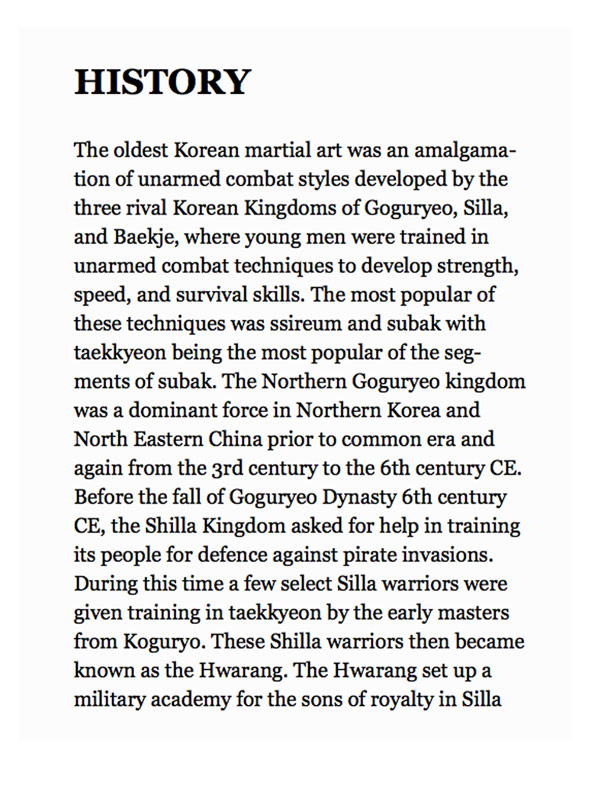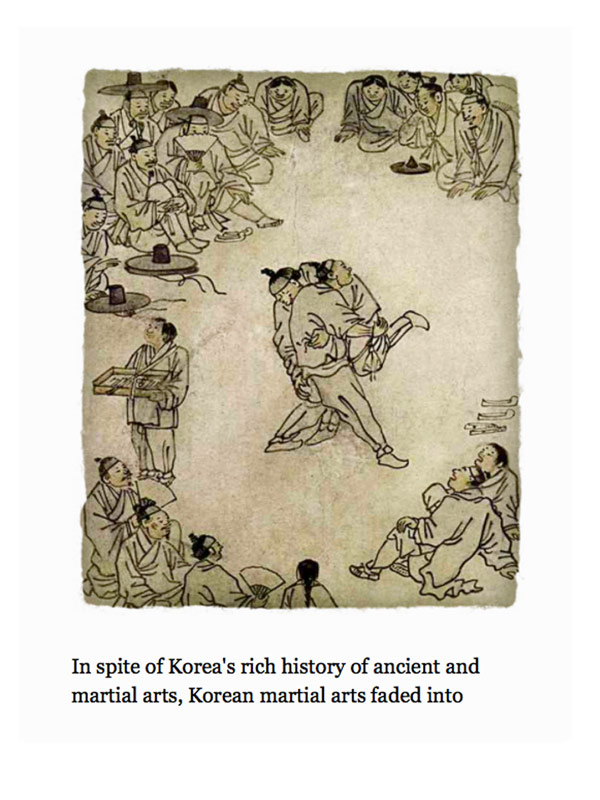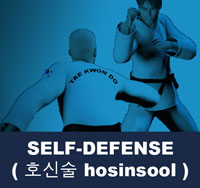- Apple Books
- Taekwondo History 태권도
Taekwondo 태권도Taekwondo Preschool
If you have any questions about Taekwondo 태권도 or any suggestions for Taekwondo Preschool, we'd like to hear from you. For frequently asked questions visit our Support section for some answers or please feel free to Contact Us ».



Taekwondo
History 태권도
The oldest Korean martial art was an amalgamation of unarmed combat styles developed by the three rival Korean Kingdoms of Goguryeo, Silla, and Baekje, where young men were trained in unarmed combat techniques to develop strength, speed, and survival skills. The most popular of these techniques was ssireum and subak with taekkyeon being the most popular of the segments of subak.
Taekwondo History 태권도
This book is available for download with Apple Books on your Mac or iOS device, and with iTunes on your computer. Books can be read with Apple Books on your Mac or iOS device.


Advertisement

Quiz
Question. What is the name of Taegeuk #8 in Korean?
Taegeuk 태극 (in World Taekwondo (WT)) refers to a set of poomse 품새 used to create a foundation for the teaching of taekwondo. A poomse or form is a detailed pattern of defense-and-attack motions and techniques used in traditional martial arts. Each taegeuk form symbolizes a specific state thought to be indicative of the belt the student currently holds, and is represented in World Taekwondo (WT) by trigrams similar to those found in the four corners of the South Korean flag.
Question. What is the name of Taegeuk #8 in Korean?
Answer you gave was: Chil Jang
Your answer is wrong! You need to study more!


The trigram associated with this poomse represents a Mountain. Also, it represents the northwest and youngest son. The symbolism behind the mountain is the indomitable and majestic nature that all mountains possess. This poomse is intended to be performed with the feeling that all movements are this majestic due to their unconquerable nature.
Question. What is the name of Taegeuk #8 in Korean?
Answer you gave was: Yuk Jang
Your answer is wrong! You need to study more!


The trigram associated with this poomse represents Water. Also, there is a relation to West and the relationship with a Second son. The movements of this poomse are intended to be performed like water; flowing, powerful and cleansing. Sometimes standing still like water in a lake, sometimes thriving as a river, sometimes powerful like a waterfall.
Question. What is the name of Taegeuk #8 in Korean?
Answer you gave was: Sam Jang
Your answer is wrong! You need to study more!


This trigram represents Fire. Related to this symbol is also East and the relationship of the Second Daughter. Fire contains a lot of energy. The symbol behind the fire is similar to the symbolism of the water in that both can aid and both can destroy. This form is intended to be performed rhythmically, with some outbursts of energy to reflect fire's rhythmic and energetic dualism.
Question. What is the name of Taegeuk #8 in Korean?
Answer you gave was: Pal Jang
Your answer is correct! Great Job!


The trigram associated with this poomse represents the Earth. Also, there is a representation of North and Mother. The associated trigram of this poomse is Yin. Yin, here, represents the end of the beginning, the evil part of all that is good. This being the last of the poomse Taegeuk, it represents the end of the circle and the cyclic nature of the Earth.
Question. What is the korean terminology for Back Stance?
Back stance is specifically focused on shifting weight to the back leg, as it offers much more control, and makes it easier to kick off the front leg. To perform this stance, the body faces to the side, with the front foot facing forward and the front leg bent. The back leg is bent slightly and the foot is turned outwards perpendicular to the front foot making the letter "L" for this stance.
Question. What is the korean terminology for Back Stance?
Answer you gave was: ( 뒷굽이 dwi kubi )
Your answer is correct! Great Job!

Back Stance ( 뒷굽이 dwi kubi ) is specifically focused on shifting weight to the back leg, as it offers much more control, and makes it easier to kick off the front leg. To perform the Back Stance ( 뒷굽이 dwi-kubi ), the body faces to the side, with the front foot facing forward and the front leg bent. The back leg is bent slightly and the foot is turned outwards perpendicular to the front foot making the letter "L" for this stance ( 서기 sogi ).
Question. What is the korean terminology for Back Stance?
Answer you gave was: ( 주춤서기 juchum sogi )
Your answer is wrong! You need to study more!

The Horse-Riding Stance ( 주춤서기 juchum-sogi ) is a beginner stance ( 서기 sogi ) generally used to practice punches ( 지르기 jireugi ) and blocks ( 막기 makgi ). It is similar to the Ready Stance ( 기본준비 junbi ) but the feet are placed much wider, about two-foot length's apart. Also, the knees ( 무릎 mureup ) are deeply bent and the shins ( 정강이 jeonggangi ) should be kept slightly perpendicular to the floor.
Question. What is the korean terminology for Back Stance?
Answer you gave was: ( 앞굽이 ap kubi )
Your answer is wrong! You need to study more!

Front Stance ( 앞굽이 ap-kubi ) is one of the most important techniques to learn when starting taekwondo as a beginner. The distance between the inside edges or namely the Reverse Foot Blade ( 발날등 balnaldeung ) of both feet should be between one to two fists apart and is about 4 to 4 one-half foot-length from origin. Rear toes are turned outward about 30 degrees and the body is also naturally angled at 30 degrees or facing straight forward depending on the upper body technique.
Question. What is the korean terminology for Back Stance?
Answer you gave was: ( 앞서기 ap sogi )
Your answer is wrong! You need to study more!

The Walking Stance ( 앞서기 ap-sogi ) is a beginner stance ( 서기 sogi ) that is used to approach or retreat in combat and patterns ( 품새 poomse ). Feet should be maintained approximately 3 foot-length from origin. To maintain a solid base, the front foot is facing straight forward and the back foot is 30 degrees to aid balance. Use of this stance ( 서기 sogi ) is featured prominently in many of the World Taekwondo (WT) Poomse.
Question. What is the korean terminology for Self-Defense?
Self-Defense is a countermeasure that involves defending the health and well-being of oneself from harm. Self-defense techniques and recommended behavior under the threat of violence is systematically taught in self-defense classes. It forms one of the main principles of the taekwondo art.
Question. What is the korean terminology for Self-Defense?
Answer you gave was: ( 지르기 jireugi )
Your answer is wrong! You need to study more!


Taekwondo Fist Strikes ( 지르기 jireugi ) are performed as a close distance alternative to kicks ( 차기 chagi ). They are executed in a number of ways - from standing, jumping, spinning and rushing forwards. The striker relaxes to the extent possible during the strike, tensing the muscles of much of the body only at the time of impact, then relaxing again to recoil the striking part. Hand strikes make up fast combinations of strikes which can leave an opponent stunned and unable to defend himself most commonly in self defense ( 호신술 hosinsool ) applications.
Question. What is the korean terminology for Self-Defense?
Answer you gave was: ( 서기 sogi )
Your answer is wrong! You need to study more!


The Korean martial arts has several Stances ( 서기 sogi ) used for different activities. Although there are strong similarities in stances throughout taekwondo schools, individual instructors often have their own preferred style. These stances are most commonly seen in taekwondo forms, and are critical for balance, precision, and good technique in the martial art.
Question. What is the korean terminology for Self-Defense?
Answer you gave was: ( 호신술 hosinsool )
Your answer is correct! Great Job!


Self-Defense ( 호신술 hosinsool ) is a countermeasure that involves defending the health and well-being of oneself from harm. Self-defense techniques and recommended behavior under the threat of violence is systematically taught in self-defense ( 호신술 hosinsool ) classes. It forms one of the main principles of the taekwondo art. The self-defense ( 호신술 hosinsool ) applications would be difficult to score in sparring as they are designed primarily to cause injury or quickly incapacitate an adversary.
Question. What is the korean terminology for Self-Defense?
Answer you gave was: ( 치기 chigi )
Your answer is wrong! You need to study more!


Taekwondo Strikes ( 치기 chigi ) are performed as a close distance alternative to kicks. Hand strikes make up fast combinations of strikes which can leave an opponent stunned and unable to defend himself. Striking ( 치기 chigi ) are taekwondo techniques striking with the twisting force of the body excluding techniques using the fist ( 주먹 jumeok ) or fingertips ( 손끝 sonkkeut ).
Question. What is the name of Taegeuk #7 in Korean?
Taegeuk 태극 (in World Taekwondo (WT)) refers to a set of poomse 품새 used to create a foundation for the teaching of taekwondo. A poomse or form is a detailed pattern of defense-and-attack motions and techniques used in traditional martial arts. Each taegeuk form symbolizes a specific state thought to be indicative of the belt the student currently holds, and is represented in World Taekwondo (WT) by trigrams similar to those found in the four corners of the South Korean flag.
Question. What is the name of Taegeuk #7 in Korean?
Answer you gave was: Yuk Jang
Your answer is wrong! You need to study more!


The trigram associated with this poomse represents Water. Also, there is a relation to West and the relationship with a Second son. The movements of this poomse are intended to be performed like water; flowing, powerful and cleansing. Sometimes standing still like water in a lake, sometimes thriving as a river, sometimes powerful like a waterfall.
Question. What is the name of Taegeuk #7 in Korean?
Answer you gave was: Sa Jang
Your answer is wrong! You need to study more!


This trigram represents Thunder. Also, the trigram is strongly connected to northeast and the relationship of the Eldest son. Thunder comes from the sky and is absorbed by the earth, thus, according to the beliefs of the I Ching, thunder is one of the most powerful natural forces. This poomse is associated with power and the connection between the heavens and earth.
Question. What is the name of Taegeuk #7 in Korean?
Answer you gave was: O Jang
Your answer is wrong! You need to study more!


The trigram associated with this poomse represents Wind. The trigram is also related to southwest and the relationship with an eldest daughter. The I Ching promotes that wind is a gentle force, but can sometimes be furious, destroying everything in its path. As such, it is intended that this poomse is performed like the wind: gently, but knowing the ability of mass destruction with a single movement.
Question. What is the name of Taegeuk #7 in Korean?
Answer you gave was: Chil Jang
Your answer is correct! Great Job!


The trigram associated with this poomse represents a Mountain. Also, it represents the northwest and youngest son. The symbolism behind the mountain is the indomitable and majestic nature that all mountains possess. This poomse is intended to be performed with the feeling that all movements are this majestic due to their unconquerable nature.








